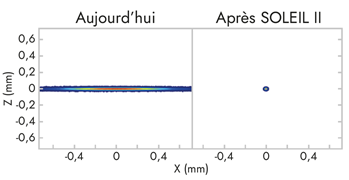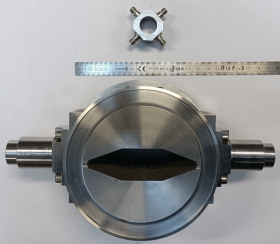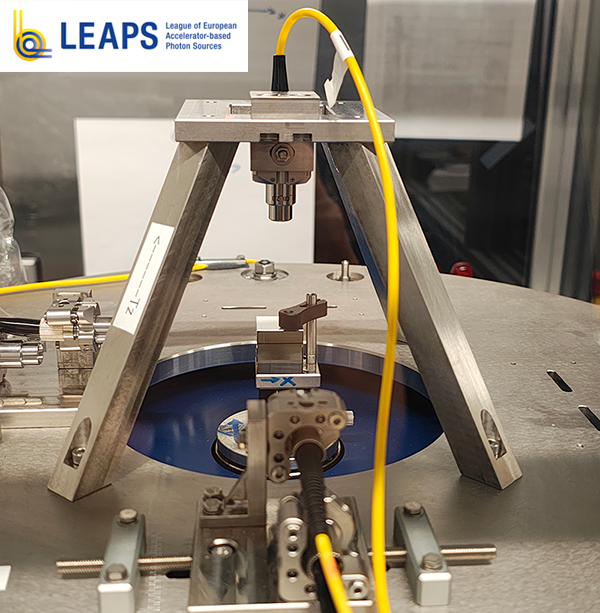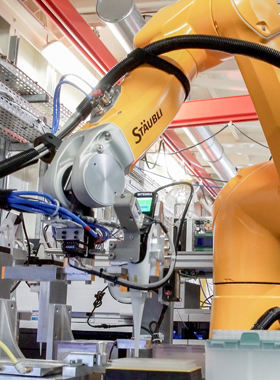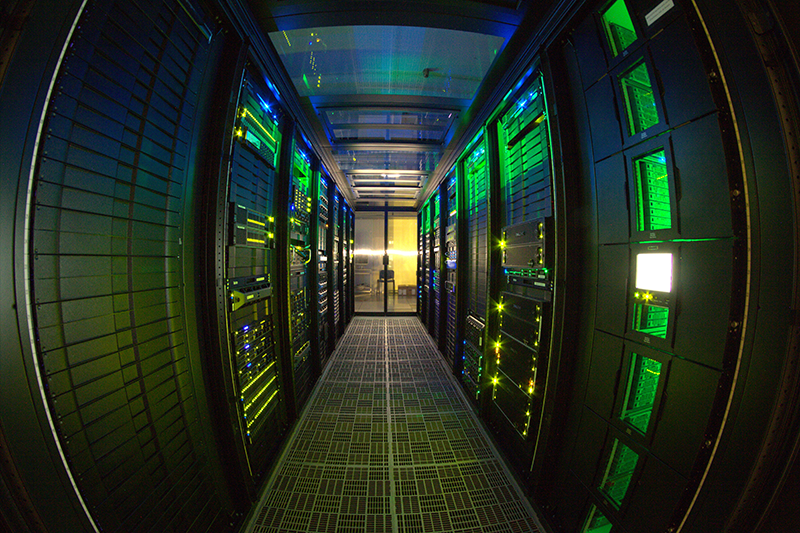The highest-Performance accelerator in the world in its category
Based on a new arrangement of magnetic elements, SOLEIL II’s high-performance electron accelerator is designed to produce photon beams of unparalleled quality, which are essential for meeting the scientific challenges ahead.
The new accelerator will be the world’s most compact and highest-performance facility in the intermediate energy range (around 3 GeV), in terms of the size and divergence of the electron beams produced. It will strengthen France’s strategic position in the production and use of synchrotron radiation.
This innovative and ambitious project aims to replace the current 354-meter circumference accelerator while preserving the existing infrastructure and the beam extraction geometry of the beamlines, thus minimizing total project cost. The energy range of the photons produced covers ten orders of magnitude, from far-infrared to hard X-rays. SOLEIL’s area of excellence (“soft” and “tender” X-rays) will remain the focus. A 40 times smaller now circular electron beam (see figure above) will render the photon beams at least 100 times brighter and more coherent in the X-ray range. The enhanced properties will enable experiments that were previously impossible or could only be conducted over very long measurement times, while guaranteeing greater stability of intensity, position, and size.
Upgrading SOLEIL’s accelerator is made possible in part by overcoming technological barriers: the vacuum chambers through which the electrons circulate and the magnets that guide them (see photos) have undergone extreme miniaturization to achieve a highly compact layout. In addition, major innovations to the accelerator include a redesigned electron injection system, as well as brand new compact magnetic devices that allow for the production and control of increasingly intense photon beams. These innovative concepts are the subject of an intense prototyping phase and have already led to the filing of seven patents.
In an european exosystem changing rapidly
SOLEIL II operates within a very dynamic European context in which all synchrotrons are engaged in a similar process, initiated by the construction of MAX IV in Sweden, the first of this new-generation synchrotron (map). The first results obtained at MAX IV and at ESRF–EBS—the European synchrotron in Grenoble, France—demonstrate the remarkable potential of these extremely bright light sources, which are driving the competitiveness of these facilities, and make SOLEIL II indispensable.
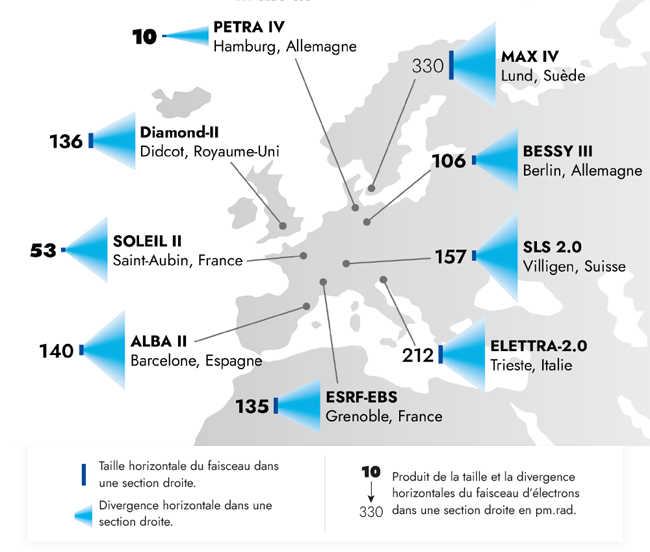
With photon beams ranging from far infrared to X-rays, SOLEIL II will remain the essential complement to ESRF-EBS, which provides higher-energy X-rays. French laboratories and industry will therefore always have access to a full range of techniques that meet all their needs. In 2017, the European synchrotrons formed a community known as LEAPS. Since then, SOLEIL has resolutely committed to this initiative, especially the community’s actions around developing innovative instrumentation that will benefit SOLEIL II by accelerating development and sharing costs among members.
An in-depth modernization
Innovative developments in instrumentation and in-depth modernization will be necessary across all beamlines in order to make full use of the unique characteristics (brightness, coherence, and micrometric size) of the beams produced by SOLEIL II’s accelerators.
To maintain the quality of the synchrotron radiation produced in the accelerators all the way to the analyzed sample, new optical systems, whose shape will be controlled at the sub-nanometric level, must be developed, manufactured, and validated. In addition, many engineering challenges must be met, especially to design nano-positioning systems, ensure mechanical and thermal stability, and develop more automation and robotization. The quality of experiments carried out on the beamlines will also depend on the integration of new-generation detectors. Finally, the optimized management of the data flows produced during these experiments, as well as their analysis, is a major concern and calls for new computing strategies.
The synchrotron’s equipment will be adapted and modernized to respond to the new expectations of the scientific communities that will use SOLEIL II, for example remote access to the beamlines, analysis and visualization of experiment data in real time, and the ability to carry out experiments under conditions that increasingly resemble actual operating or usage conditions of the objects under study. Combining measurements across multiple beamlines, at different size scales, and thus taking advantage of the wide range of wavelengths of radiation produced by SOLEIL, will be made easier with SOLEIL II.
These ambitious developments are being carried out with the goal of characterizing inert or living matter from a tenth of a nanometer in size to several millimeters and to study ultra-rapid phenomena in real time, with considerably improved detection sensitivity. They will provide French and international scientific communities with unparalleled tools for exploring the electronic, magnetic, chemical, and structural properties of matter.
These developments will benefit from the creation of strong academic, industrial, national, and international partnerships.
A data-driven project based on a comprehensive digital transformation
New digital services will make full use of the potential offered by the new accelerator and beamlines. Advanced computational techniques such as machine learning will be used to control the characteristics of the electron beam and support experimental projects on the beamlines. Robotics will help to make the best use of available beamtime, including for remote experiments. To manage the barrage of data resulting from the increase in multi-technique experiments, the digital infrastructure will be modernized, supported by national computing and storage centers.
For beamline users, the added value of SOLEIL II will also lie in the visualization and analysis tools, data preservation, and the associated access and search services. By enabling data sharing and openness, in line with the National Open Science Plan, these services will maximize the impact of experiments conducted at the synchrotron. This transformation will be based on a modular, secure, and interconnected architecture, to facilitate the integration of new services, as well as the evolution of existing ones, ensuring their long-term alignment with technical and scientific needs.

